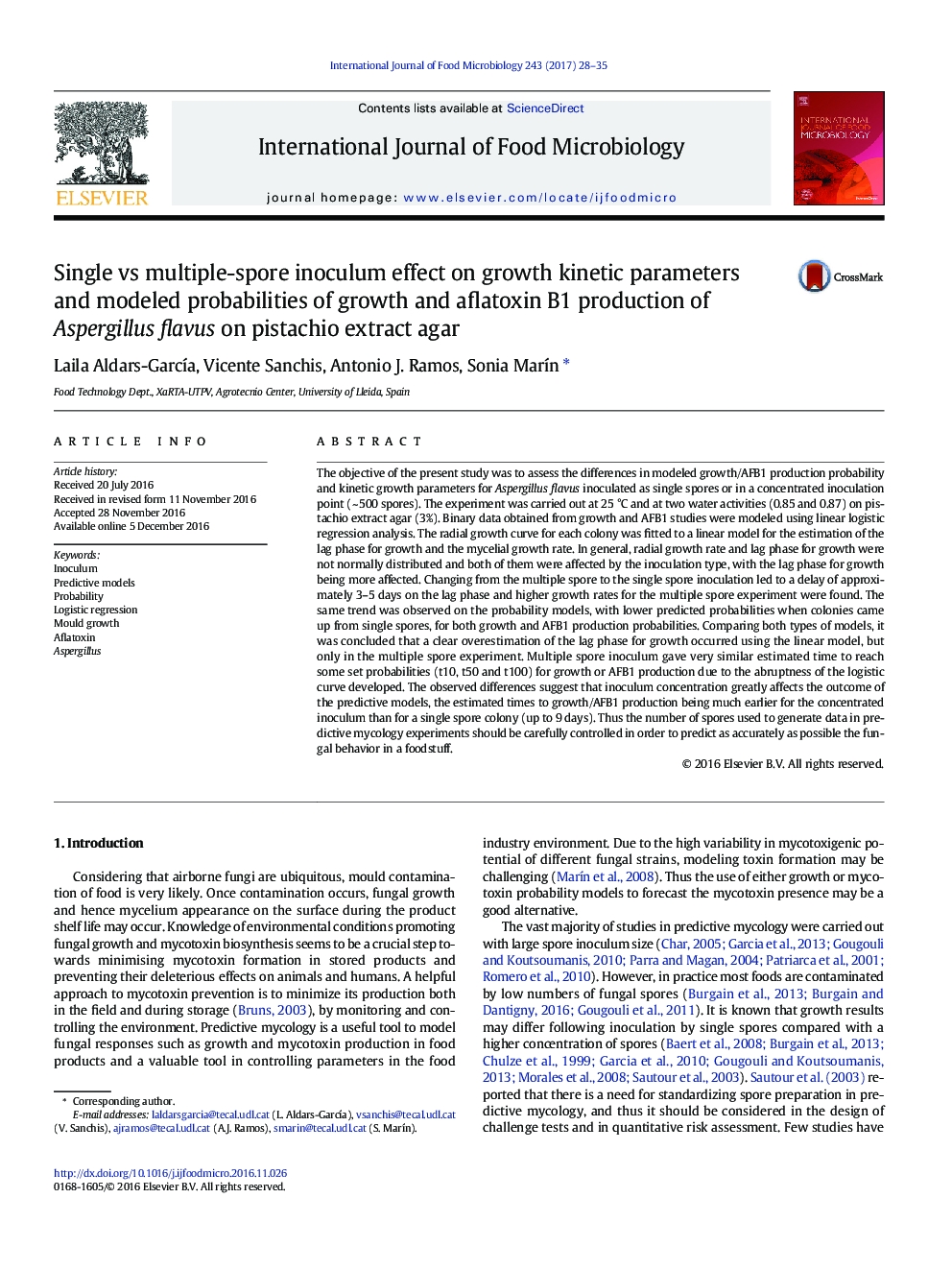| کد مقاله | کد نشریه | سال انتشار | مقاله انگلیسی | نسخه تمام متن |
|---|---|---|---|---|
| 5740803 | 1616540 | 2017 | 8 صفحه PDF | دانلود رایگان |

- Differences in growth and AFB1 production of A. flavus at two inoculation levels were assessed.
- Conditions were set in order to illustrate a possible transport/storage contamination scenario.
- Significant differences were found when changing from the multiple spore to the single spore inoculation.
- Predicted probabilities were lower when colonies came up from single spores.
- The number of spores used in predictive mycology should be carefully controlled.
The objective of the present study was to assess the differences in modeled growth/AFB1 production probability and kinetic growth parameters for Aspergillus flavus inoculated as single spores or in a concentrated inoculation point (~ 500 spores). The experiment was carried out at 25 °C and at two water activities (0.85 and 0.87) on pistachio extract agar (3%). Binary data obtained from growth and AFB1 studies were modeled using linear logistic regression analysis. The radial growth curve for each colony was fitted to a linear model for the estimation of the lag phase for growth and the mycelial growth rate. In general, radial growth rate and lag phase for growth were not normally distributed and both of them were affected by the inoculation type, with the lag phase for growth being more affected. Changing from the multiple spore to the single spore inoculation led to a delay of approximately 3-5 days on the lag phase and higher growth rates for the multiple spore experiment were found. The same trend was observed on the probability models, with lower predicted probabilities when colonies came up from single spores, for both growth and AFB1 production probabilities. Comparing both types of models, it was concluded that a clear overestimation of the lag phase for growth occurred using the linear model, but only in the multiple spore experiment. Multiple spore inoculum gave very similar estimated time to reach some set probabilities (t10, t50 and t100) for growth or AFB1 production due to the abruptness of the logistic curve developed. The observed differences suggest that inoculum concentration greatly affects the outcome of the predictive models, the estimated times to growth/AFB1 production being much earlier for the concentrated inoculum than for a single spore colony (up to 9 days). Thus the number of spores used to generate data in predictive mycology experiments should be carefully controlled in order to predict as accurately as possible the fungal behavior in a foodstuff.
Journal: International Journal of Food Microbiology - Volume 243, 21 February 2017, Pages 28-35